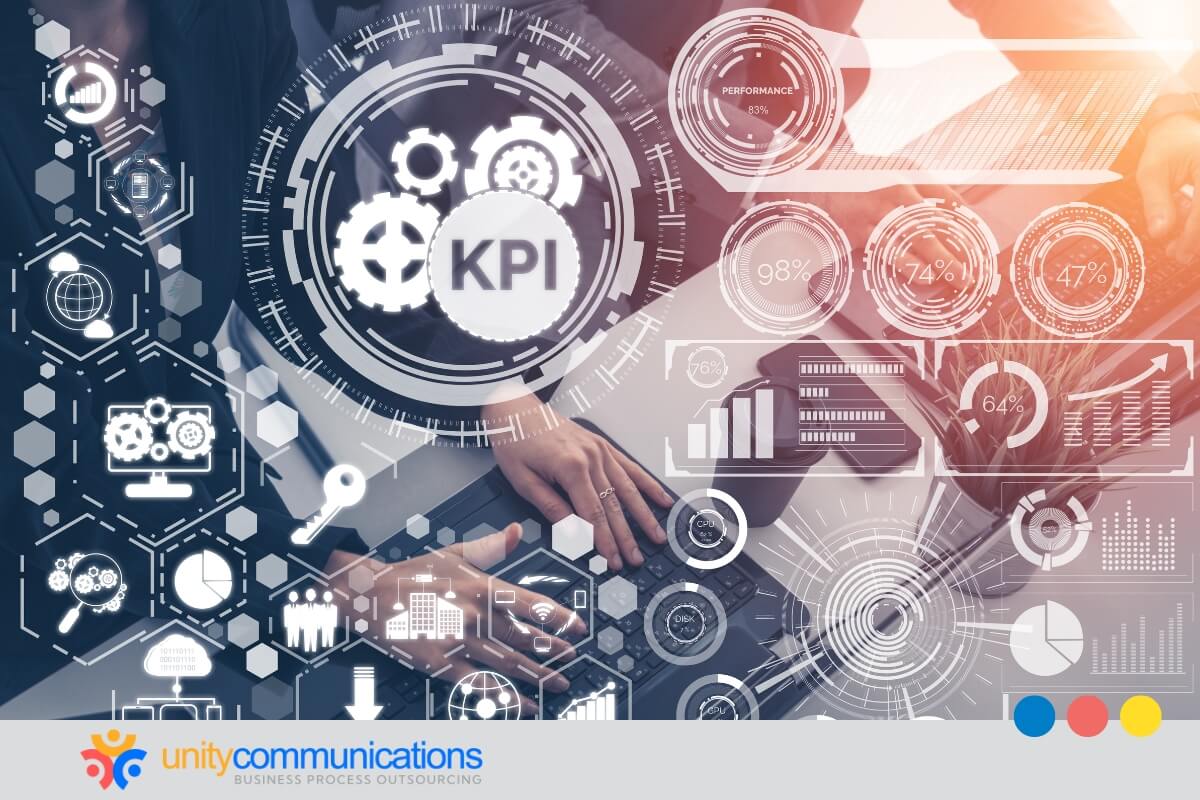Table of Contents
Many sales professionals enter the field because they enjoy connecting with people and closing deals. Yet reality often looks very different. Much of their day is consumed by administrative tasks, manual data entry, and follow-ups instead of actual selling.
AI agents automate repetitive, time-consuming tasks that drain productivity. By handling the busywork, they free sales teams to focus on what matters most: building customer relationships and driving revenue.
This guide covers best practices for integrating AI sales agents into your sales strategy. You’ll learn how to choose the right agent, implement it effectively, and combine AI automation with human expertise to make them a part of your sales playbook in 2025.
How to integrate AI sales agents into your strategy

An AI agent, also known as an intelligent or agentic AI, is a software that perceives its environment, autonomously takes actions to achieve a goal, and improves its performance over time through techniques such as machine learning (ML), natural language processing (NLP), and decision-making algorithms.
The global AI agents market is growing rapidly. Estimates place its value at around $5.4 billion in 2024, growing at a compound annual growth rate (CAGR) of 45.8%, to reach approximately $50.3 billion by 2030. In 2025, 51% of organizations are actively exploring AI agent integration, and a growing number are already piloting such systems.
In the context of sales, these agents can manage tasks such as lead qualification, messaging, scheduling, and even decision-making to lighten the burden on human reps and allow them to focus on high-impact engagements.
Below are practical steps to help you assess fit, set goals, choose the right solution, and integrate AI agents into your sales strategy.
1. Assess sales process gaps to determine AI agent fit
Before bringing in an AI sales agent, you must evaluate your current sales process. Too often, businesses rush into adopting new tools without identifying the specific challenges they need to solve.
This leads to misalignment where the technology is underutilized or doesn’t generate a measurable impact. To avoid this pitfall, document how a lead moves through your pipeline from the first touchpoint to the final close:
- Stages of the cycle: Prospecting, qualification, nurturing, demos, proposals, negotiations, and post-sale follow-up
- Tasks within each stage: Who performs them, how long they take, and what tools are used
- Points of handoff: Where leads transition from marketing to sales or from one rep to another
This exercise often reveals redundancies or inefficiencies. For example, manually logging every call into the customer relationship management (CRM) system is a tedious and time-sink process that you can automate.
Next, highlight where progress stalls or productivity dips. Conduct surveys or interview your sales team to validate these points. Reps on the ground will tell you where they lose momentum or feel bogged down by repetitive tasks.
Common examples include:
- Prospects waiting hours or days for a reply
- Missed opportunities because reps forget to check in
- Reps spending hours updating CRMs instead of talking to customers
- Endless back-and-forth emails to find available times
- Time wasted chasing contacts who were never a good fit
After identifying the sticking points in your sales process, align them with what AI sales agents do best. For instance, they can qualify leads by scoring them against firmographics, behavior, and engagement signals, ensuring that reps spend their time on the highest-potential prospects.
You can’t solve every gap at once. Start with areas where automation can deliver the fastest return. You can think of this as building momentum: solve one high-impact problem, measure the results, and then expand to the next.
2. Set clear goals and key performance indicators (KPIs) before implementation
Once you’ve mapped your sales gaps and aligned them with AI agent strengths, the next critical step is to define specific goals and KPIs before implementing an AI agent. The goal is to ensure clarity, set expectations, and make it possible to measure and prove impact, especially in pilot stages where tangible results build momentum for further adoption.
First, define the specific outcomes you expect from an AI sales agent. Are you aiming to reduce time spent on repetitive tasks? Improve response rates to inbound leads? Streamline scheduling? Each of these goals should be rooted in real business objectives.
Once you’ve set your objectives, choose your KPIs. Anchor them to your objective, for example:
- Speed metrics: Average response time, time-to-contact
- Volume or throughput metrics: Number of qualified leads, meetings scheduled
- Effectiveness metrics: Conversion rate, win rate, pipeline value
- Efficiency metrics: Time saved per rep, reduction in CRM data entry load
Research shows that only about 34% of organizations are using AI to make their KPIs more intelligent, adaptive, and predictive. Those that do report significantly better outcomes. Specifically, firms using AI-enhanced KPIs are three times more effective at predicting performance and thrice more likely to see greater financial benefits.
Finally, look at baseline performance and determine achievable improvements in the pilot phase. Setting stretch targets is fine, but they must be grounded in what you can reasonably measure and influence.
3. Choose the right AI agent
AI agents come either prebuilt or custom-made using a low-code builder and workflows. The ideal option for your team depends heavily on your business size, industry, and sales complexity. Making the right choice at this stage ensures your investment delivers value quickly and scales effectively as your needs evolve.
Prebuilt AI sales agents are ready-to-use solutions that can handle common sales functions such as lead qualification, meeting scheduling, and automated outreach. They are typically cloud-based, easy to integrate, and come with pre-configured workflows.
- Best for: Small to mid-sized businesses or companies with straightforward sales processes
- Advantages: Quick setup, lower upfront cost, less need for technical expertise
- Limitations: Less flexibility in tailoring workflows, limited adaptability for highly specialized industries
Low-code AI platforms are a great middle ground. They allow you to start with a prebuilt framework. Then, you can customize workflows, integrations, and conversational logic to suit your needs—all without requiring advanced coding skills.
This approach provides more adaptability while maintaining ease of deployment.
- Best for: Mid-sized businesses and enterprises looking for a balance between speed and customization
- Advantages: Faster to deploy than full custom builds, more adaptable than out-of-the-box tools, easier to maintain with in-house teams
- Limitations: Might not handle extremely complex or heavily regulated use cases as effectively as a fully custom solution
Fully custom AI agents are designed from the ground up around your needs, processes, and data. They often integrate deeply into enterprise systems and can handle complex requirements, such as industry-specific compliance rules or multi-language, multi-region sales operations.
- Best for: Large enterprises, highly regulated industries, or organizations with complex buyer journeys
- Advantages: Maximum flexibility, deep integration, and the ability to model highly specialized workflows
- Limitations: Requires significant investment, longer development cycles, and strong technical resources
If you want the benefits of AI without managing implementation alone, consider partnering with a hybrid business process outsourcing (BPO) provider. These partners combine human expertise with AI-driven automation, ensuring your sales process balances efficiency and personalization.
4. Integrate AI agents with existing CRM and sales tools
To deliver seamless workflows, your AI sales agent must connect directly with your CRM, email automation tools, and communication platforms so that data flows freely and actions are tracked in real time.
Without integration, you risk creating another silo instead of streamlining your sales operations. For example, when an AI inbound agent captures a new lead from a website chat or call, the interaction should be logged automatically in your CRM, enriched with contextual details, and assigned to the right rep.
The same applies to follow-up tasks. If the AI books a meeting, it should sync instantly with both the rep’s and the prospect’s calendars while updating the opportunity stage.
Here are the benefits of integration:
- Every interaction is recorded in your CRM, giving reps a complete view of the customer journey.
- Routine tasks such as lead assignment, status updates, and follow-ups are automated, reducing manual work.
- AI agents ensure that information is synchronized across sales, marketing, and customer success systems.
- With unified data, AI can tailor messages, recommendations, and next-best actions based on a full customer profile.
Integration ensures AI agents don’t operate in isolation. It eliminates friction, enhances productivity, and empowers reps to focus on closing more deals.
5. Design effective scripts and conversation flows
AI sales agents need the scripts and conversation flows to work properly. Unlike human reps, AI doesn’t rely on intuition. Their performance hinges entirely on the structure and logic you build into its interactions. When done well, these flows can elevate customer experiences, drive conversions, and scale personalized engagement.
Define the tone and personality your AI agent should convey: friendly, professional, helpful, or confident. Once the voice is clear, embed personalization cues, use the user’s name, reference their business or past activity, and tailor messaging based on context.
For example:
- An AI inbound agent might start with a friendly greeting, such as, “Hello! I’m Lina, your virtual sales assistant. What can I help you with today?” From there, it naturally adapts to the user’s intent.
- If a prospect asks about pricing, the agent can respond with “Got it—you’d like details on pricing. I can share an overview now or connect you with a rep for tailored options.”
- If someone is exploring products, it might guide the conversation by asking, “Are you looking for solutions for small teams, enterprise clients, or something in between?”
- If the user wants to book a demo, the agent can immediately move into scheduling, offering, “Perfect—I can help with that. Do mornings or afternoons work better for you?”
At every step, the agent provides quick, relevant information, offers a clear next action, and seamlessly coordinates the handoff.
Remember, every touchpoint should harvest conversational context and intent. Use tagging or metadata to flag qualified leads, note objections, or set the next steps. This empowers sales reps to pick up where the AI left off, with full visibility.
The impact of well-designed flows is significant. AI-powered platforms can automate up to 30% of a sales rep’s manual tasks, freeing your team from repetitive outreach, lead qualification, and scheduling work.
6. Train AI models with relevant customer and sales data
AI sales agents only become effective when they’re trained on the right inputs and relevant data. Without them, the system will produce generic or inaccurate responses that fail to resonate with prospects. Train your agents with data that reflects real customer behavior, sales cycles, and industry-specific nuances.
You can feed the model high-quality datasets that include past conversations, successful sales interactions, CRM records, and product knowledge bases. These sources help the agent understand buyer personas, typical objections, and the messaging that has historically driven conversions.
Layering in behavioral and engagement data, such as email open rates, call outcomes, and deal-closing triggers, enables the AI to adapt responses more intelligently to where a prospect is in the funnel.
Maintaining data freshness is equally important. Outdated pricing sheets, obsolete product specs, or irrelevant case studies can erode trust with customers if surfaced in conversations. Regularly updating and curating training data ensures that AI agents always provide timely, accurate, and persuasive information.
7. Monitor AI performance through analytics dashboards
Launching an AI sales agent is only the beginning. The real benefit comes from improvement. Analytics dashboards make improvement possible by showing you how AI agents perform in real-world interactions.
Metrics such as response time, lead qualification accuracy, conversion rates, and drop-off points reveal whether the AI is enhancing customer engagement or leaving opportunities on the table.
A good dashboard can highlight trends. For example, you might discover that the AI performs well during initial lead capture but struggles to convert prospects beyond the second interaction. Insights such as these point directly to where conversation flows need refinement or where additional training data could strengthen responses.
Be sure to keep adjustments iterative. Regular fine-tuning of scripts, retraining models with new sales data, and experimenting with A/B-tested conversation strategies improve agent performance. Over time, this optimization process ensures that AI agents evolve with shifting buyer behavior and market conditions.
8. Combine AI agents with human reps
AI sales agents excel at speed and scalability. However, they can’t replace the empathy, creativity, and complex problem-solving of human reps. An effective sales strategy combines the strengths of both.
Think of it in the same way you’d think about how outsourcing works. In BPO, tasks are distributed based on who can deliver the best outcome most efficiently. AI handles high-volume, low-complexity interactions that require consistency and speed, while human reps focus on strategic conversations, relationship-building, and closing deals.
For example, an AI inbound agent might capture and qualify leads 24/7, then seamlessly hand them off to a salesperson once the prospect is ready for a deeper discussion.
A hybrid approach ensures customers get fast, accurate responses without sacrificing the empathy and expertise that only humans can provide. Sales teams benefit from fewer administrative bottlenecks and stronger pipelines.
Real-world examples of AI agents in action

One of the best ways to understand the impact of AI in sales is to look at how these agents operate in real-world scenarios. Here are two examples of AI agents at work in sales today.
Prepare reps for sales calls
Imagine a junior rep about to join a critical client call. Instead of waiting for manager feedback, they can interact with a sales coaching agent right from their dashboard. This AI agent can role-play objections, analyze recorded pitches, and offer targeted feedback based on CRM data and buyer personas.
Nurture inbound leads
Top-of-funnel activities, such as gated content downloads, demo requests, or webinar signups, can overwhelm reps with unqualified leads. Here, an AI inbound agent engages leads immediately through personalized outreach, asks qualifying questions, and nurtures interest until they’re sales-ready. By the time the lead reaches a rep, much of the groundwork is already done, allowing human sellers to focus on advancing opportunities.
These examples show how AI sales agents extend the capabilities of sales teams. They engage prospects faster, prepare reps better, and move deals through the pipeline with less friction.
The bottom line
AI sales agents combine ML, NLP, and decision-making to deliver human-like interactions at scale. They transform data into action, surfacing insights, generating personalized outreach, and flagging high-intent prospects so your reps can focus on closing deals.
However, their real value emerges when paired with human expertise. Hybrid BPO partners such as Unity Communications deliver this balance, combining AI-driven efficiency with human empathy and strategic thinking.
If you’re ready to optimize your sales strategy and integrate AI agents with human talent, let’s connect.




